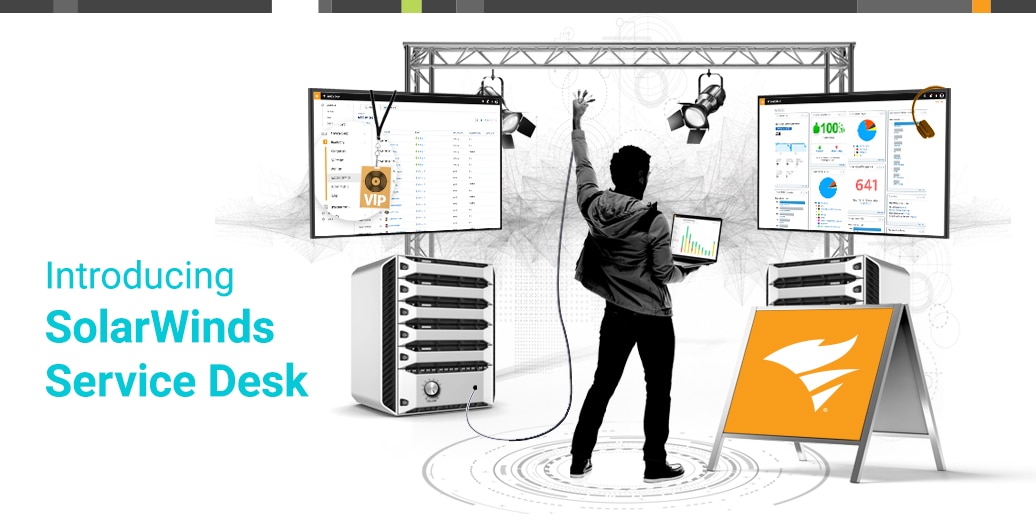Having both a positive employee experience and employee engagement are key factors for an organization’s success. In a recent
SolarWinds survey, over 85% of IT pros said that IT is critical or very important in driving that experience.
Service desk pros work directly with employees on their day-to-day technology issues, but all of IT is responsible for managing and maintaining the technology that employees depend on. That’s why the relationship between IT operations management (ITOM) and IT service management (ITSM) is a critical piece of the overall
employee experience. So how exactly do ITOM and ITSM connect employees? Let’s break down what each term means first, and then how they align.
The Basics of IT Operations Management (ITOM)
ITOM is
described as “responsible for managing the capacity, performance and availability of mechanisms in an organization’s IT infrastructure.” There are two main responsibilities in ITOM:
- Monitoring: tracking network and systems performance along with security threats
- Service delivery: ensuring servers function properly, devices are up-to-date with operating systems, applications are updated, etc.
The IT operations monitoring toolset can be viewed as an alarm system. There are sensors put in place to pick up on any unwarranted issues. IT operations also delivers services including setting up critical infrastructure and applications in response to the needs of the business.
The Basics of IT Service Management (ITSM)
IT service management is a collection of IT management processes that enable your organization to design, deliver, support, and manage IT services. A
service desk helps providers stay organized and productive. It gives IT the ability to build workflows and approval processes, track performances of internal support, and create more efficient lines of communication.
Effective ITSM helps resolve incidents and requests faster, connecting employees with the resources they need from IT. Functions of a service desk include:
- Hardware tickets: This type of ticket is submitted if any piece of equipment used to do an employee’s job needs to be repaired. As previously mentioned, a hardware ticket can be submitted to the IT department if a computer is broken, there’s a shortage in a laptop cord, and so on.
- Service/applications requests: The best way to look at this is if an employee needs something. This could be requesting an application license, a standing desk, or privacy screens for computer monitors.
In addition to the benefits listed above, having an
ITSM solution that supports an organization’s technology environment helps reduce costs and time spent on maintaining a service desk solution. It also helps ensure employees have up-to-date technology supporting their needs wherever they are.
Today’s Challenges in IT
Reliance on a stable IT infrastructure is growing. As businesses expand, there’s a need for increased IT support and
employment engagement methods to help resolve issues more quickly and boost productivity. But with growth comes challenges. Common challenges IT departments face are:
Complexity of hybrid IT environments
Migrating infrastructure services to
the cloud has placed many businesses in a new era of work. Hybrid IT brings in greater complexity and technology abstraction. However, migrating isn’t always easy. Corporate reservations or lack of bandwidth can make cloud migration challenging. It’s important to look for systems that can share data through
integrations to simplify some of the challenges that can come with the complexity of hybrid IT.
Rapidly changing technology
Because the IT landscape is continuously evolving, analyzing those changes is critical. Systems are being updated regularly, data is migrating, and if not properly planned, it can negatively impact employees. Careful planning and risk assessment can help minimize outages, downtime, and transition periods with agile technology.
High reliance on IT for all business functions
One of the toughest challenges of the
digital transformation age is consolidating data and creating opportunities for different systems to work together. Once upon a time, IT was a separate entity in a business. Many departments didn’t have much interaction with IT pros unless, for example, a computer wasn’t working. Now, many departments like HR, finance, facilities, and more have revitalized their processes to complete tasks, relying less on emails and spreadsheets, and incorporating IT service desks and management systems. The budget for IT staffing doesn’t always grow at the same pace as the reliance on technology across departments, so IT needs ways to streamline and automate the services that the business depends on.
Using ITOM and ITSM Together
Service management can help address some of today’s challenges in IT operations. Bring some of those ITSM practices into ITOM. Push server updates or maintenance through
ITIL change management. Leverage the
configuration management database (CMDB) to build complete data around all IT infrastructure assets, and create audit logs for changes and updates to the technology environment.
ITSM can help bring spending under control with
IT asset management, helping to simplify the otherwise complex nature of today’s hybrid IT operations. Today’s
ITSM solutions can also integrate directly other technology systems, automating tasks and sharing data to keep workflows moving. This includes integrating with monitoring software, streamlining communication between the frontlines of the service desk and IT operations pros.
Most importantly, combining ITOM and ITSM can help provide a better employee experience with technology. Though they are two separate disciplines, an integrated IT department can be more proactive, which means they’re better equipped to provide more value to employees and the entire business.
Download this eBook,
The Gateway to a Modern Employee Experience: IT Service Desk, to learn more about how ITOM and ITSM can work together to streamline the employee experience.








